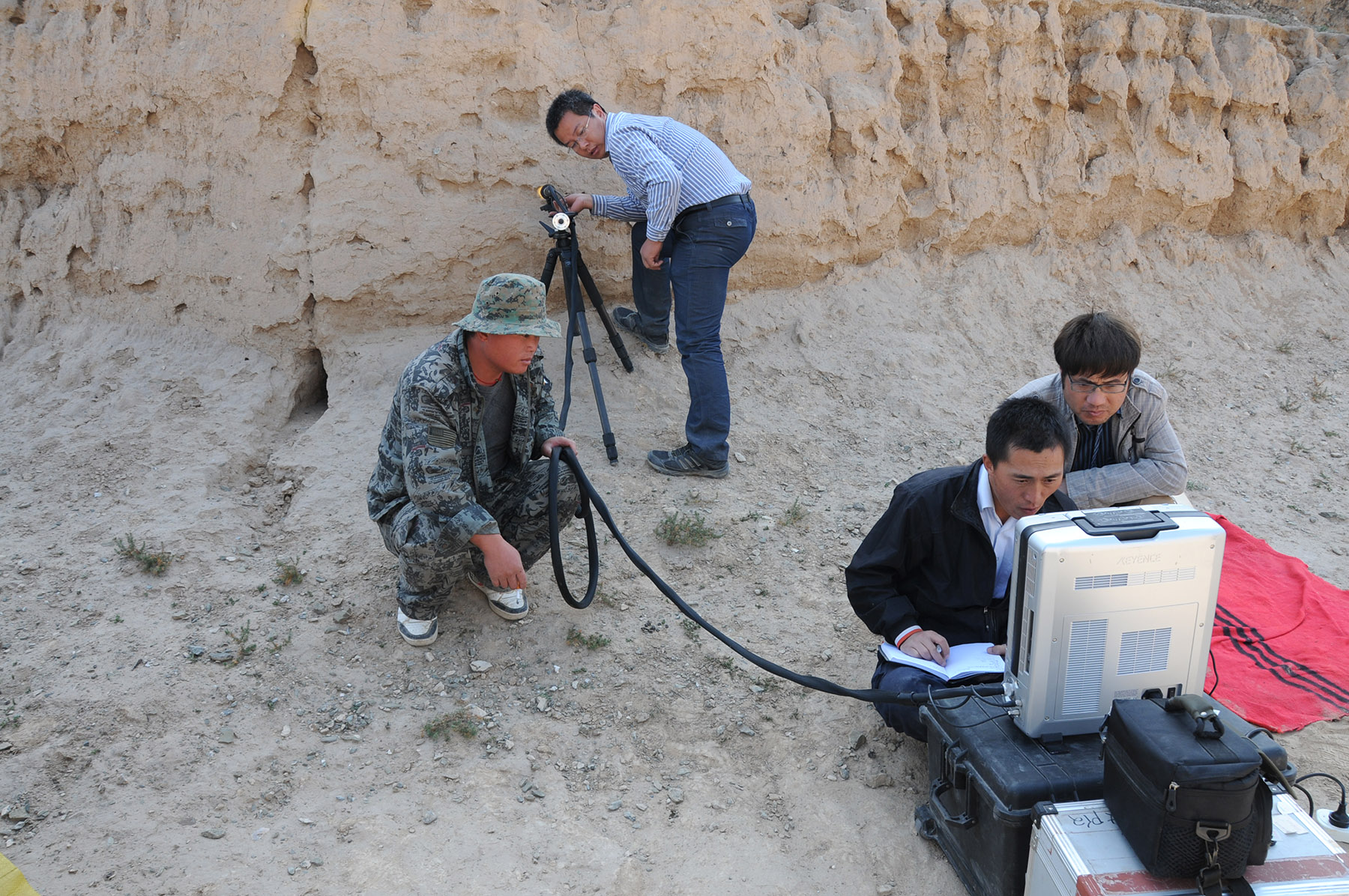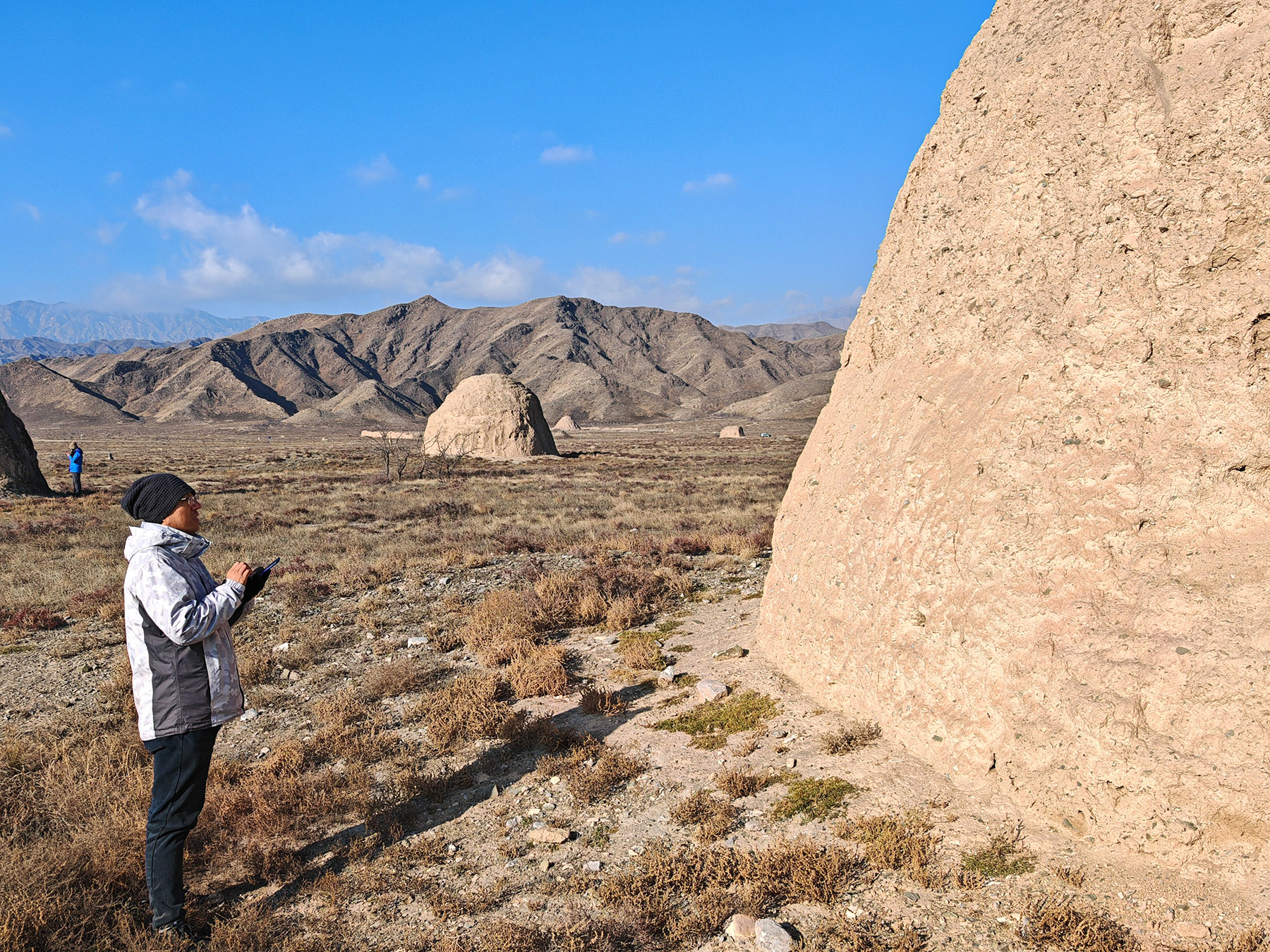
No matter the desert, Yang Shanlong, a researcher at the Dunhuang Academy in Gansu province, is devoted to prolonging the life of the earthen heritages that are key testimonies to history.
Over the years, the 43-year-old conservation expert has shared Dunhuang's advanced techniques for protecting earthen sites with the Xixia Imperial Tombs in Yinchuan, Ningxia Hui autonomous region.
Standing at the eastern foothill of the Helan Mountains for nearly a millennium, the tomb complex, a newly minted UNESCO World Heritage site, is one of the largest existing cultural sites of the Xixia Dynasty (1038-1227).
READ MORE: Mounds claim their rightful place in history
When Yang arrived at the site for the first time in 2007, he found time had left its mark. Base erosion leading to recesses in the wall surfaces was a common phenomenon on many remains, which then led to smaller bases that made the relics unstable and at risk of collapse in the event of an earthquake.
According to Yang, erosion is caused by the repeated dissolution and crystallization of salt, which is often abundant in arid soil and happens under the influence of water in the earthen sites. Such salt damage can be especially prominent at the remains' bases, leading to the loosening of soil and peeling from the main body.
Moreover, cracks on the earthen buildings allow water to enter, and heavy rains sometimes wash away parts of the remains.
"Water is the major risk for earthen sites," says Yang, who adds that the tombs are located at the juncture of arid and semi-arid regions, where it rains relatively frequently compared with other northwestern areas.
Many experiments
The Yinchuan Xixia Imperial Tombs Management Office has cooperated with Dunhuang Academy and other institutions since 2000 to protect the complex, carrying out more than 60 projects in 17 years to eliminate the life-threatening risks at the site.
Dunhuang Academy, which oversees the World Heritage site Mogao Caves, has rich experience in dealing with earthen relics in arid environments. Xixia had a previous connection with Dunhuang because it once governed the area nearly 1,000 years ago and built caves there.
Yang says that based on Dunhuang's experience, they developed a series of methods catering to the Xixia tombs' specific issues, such as restoring the base erosion.

According to Yang, when facing the problem, it is necessary to complement the lost parts to make the bases stable again; but what and how to add to them is a difficult challenge. Without a solid approach, the new parts will not combine well with the old and may fall apart quickly.
After conducting numerous experiments, they arrived at a solution. By analyzing the components of the earthen remains, they located earth with similar components but less salt, and added calcined ginger nuts, a type of new material with good waterproofing. Then they rammed the mixture into the base, using a technique that imitates ancient construction methods.
The new parts link well with the originals, and the buildings have stable bases that are protected from collapsing.
To prevent the water from leaking in, they also sealed the cracks. For the parts that might easily be washed away by heavy rain, they added a "sacrificial layer" — an artificial layer covering the original parts that can handle wear and tear — containing the mixture of soil and calcined ginger nuts on the surface.
The layers they added for buildings in the Mausoleum No 6 in 2011, after 14 years, are still holding up well. "Once a layer is worn or washed away, we add a new one so that the original remains are always protected," says Yang.
The techniques and experiences summarized from the protection practices of the Xixia Imperial Tombs have won many prizes and have been used for many other earthen sites in China, including the Jiaohe ruins in the Xinjiang Uygur autonomous region and the Archaeological Ruins of Liangzhu City in Zhejiang province, a UNESCO World Heritage site.
"In the past, staff members were anxious when it rained, worrying that some remains would collapse. But after years of efforts, we don't worry about such issues and focus on smaller problems," says Ren Xiufen, director of the cultural relics protection department of the Yinchuan Xixia Imperial Tombs Management Office.
Human efforts
Today, the site is in a new phase of preventive protection. After eliminating the major risks, the site's conditions are closely monitored by human patrols and machines.
Liang Binjie, a member of the management office responsible for patrolling the site, says they generally conduct a patrol every three months. During patrols, they check for base erosion, surface weathering, and cracks appearing on the bodies. They prevent tourism misconduct, such as crossing protective barriers to touch the mounds.
They also installed facilities to monitor the surrounding environment and the remaining relics. Some facilities will sound an alarm when they observe changes in the cracks and will notify someone to check if any measures must be taken. Moreover, three-dimensional scanning and oblique photography by unmanned aerial vehicles are also used, Liang says.
The information collected and other statistics surrounding various aspects of the site's conditions are gathered on a heritage monitoring and early warning platform that was developed by the management office to analyze the site more scientifically.
ALSO READ: Layers of sacred reflections
For example, the site's World Heritage status may bring more visitors to the tomb complex. The platform has calculated the cap at 44,000 people each day. It currently shows that the site receives about 10,000 people a day at most. Therefore, the number of tourists is controllable, ensuring the safety of the heritage, says Ren.
The information on the platform can also automatically form archives that are stored in the management office's archives center. "The archives can quantify our work to track the key points of our work each year," says Ren.
Yang Yi, who is in charge of the archives center, says they have collected over 900 volumes of archives, totaling 50,000 pieces about the tombs. They are collected both digitally and in paper form.
"A good collection of archives can strongly support the protection, management, research and display of the Xixia Imperial Tombs, laying a solid foundation for our future work," says Yang Yi.
Contact the writers at wangru1@chinadaily.com.cn


